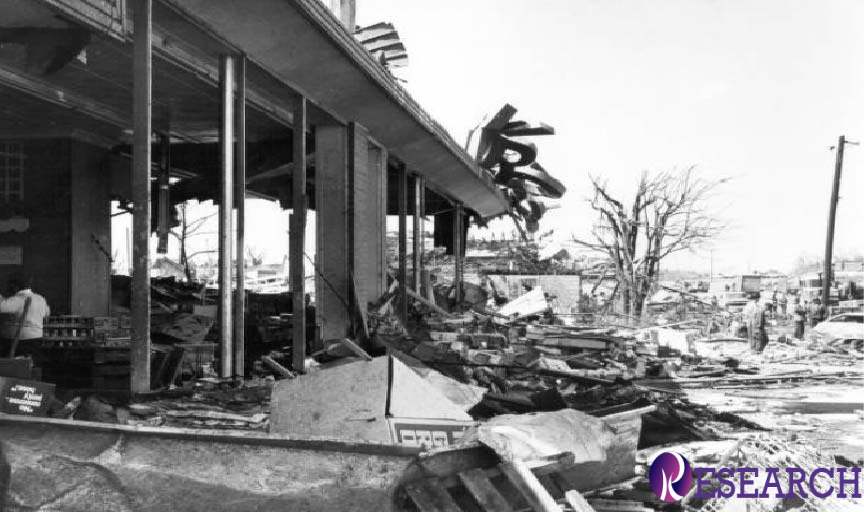Xenia, Ohio Tornado: A Look Back at the Destructive Force That Shaped a Community
On April 3, 1974, Xenia, Ohio, experienced a natural disaster that left an indelible mark on its landscape and residents. A powerful tornado, part of a larger “Super Outbreak,” swept through the town, killing 33 people and destroying countless homes, businesses, and public spaces. The event remains one of the most significant in the area’s history, not only for its devastation but also for the resilience it inspired in the community. This article explores the impact of the Xenia tornado, how it affected lives, and the rebuilding efforts that followed.
Understanding the Xenia Tornado: Facts and Figures
The Xenia tornado was a part of the infamous 1974 Super Outbreak, one of the largest and deadliest tornado outbreaks in recorded history. Over two days, 148 tornadoes touched down across 13 U.S. states, killing 319 people and injuring thousands. The Xenia tornado, rated an F5 on the Fujita scale, was one of the strongest of these storms.
What Happened on April 3, 1974?
The tornado struck Xenia in the late afternoon around 4:30 p.m., tearing through the town with winds estimated at over 300 mph. As it made its way through neighborhoods, the storm left a mile-wide path of destruction, leveling hundreds of homes and buildings. The tornado destroyed much of the town’s infrastructure, including schools, businesses, and critical public services.
Casualties and Damage
The Xenia tornado left 33 dead and more than 1,300 injured. According to historical records, approximately 1,400 homes and businesses were either severely damaged or completely destroyed. In terms of economic impact, the total damage was estimated at around $250 million (nearly $1.3 billion in today’s dollars).
The Super Outbreak of 1974: What Made It So Unusual?
The 1974 Super Outbreak was unique in both its scope and intensity. Meteorologists were particularly struck by the unusual weather conditions that created such a widespread event. A convergence of warm, moist air from the Gulf of Mexico, coupled with cold, dry air from the north, created the perfect conditions for multiple violent tornadoes.
Other Notable Tornadoes in the Outbreak
Beyond Xenia, the Super Outbreak generated other significant tornadoes. The following are some of the most noteworthy:
- Brandenburg, Kentucky: A powerful tornado killed 31 people, causing extensive damage to homes and businesses.
- Louisville, Kentucky: Another F4 tornado struck Louisville, causing deaths and severe destruction.
- Huntsville, Alabama: This city experienced its own destructive tornado, part of the same outbreak, which impacted schools, residences, and businesses.
These tornadoes demonstrated how the outbreak reached many communities, leaving lasting impacts across several states.
Community Impact: How Xenia Rebuilt After the Tornado

The immediate aftermath of the Xenia tornado saw residents come together to begin the arduous process of rebuilding. Despite the overwhelming losses, the community exhibited resilience, with local leaders, organizations, and federal support stepping in to aid in recovery.
Emergency Response and Recovery Efforts
In the wake of the tornado, emergency response teams, the National Guard, and volunteers from neighboring cities and states flocked to Xenia to assist with search and rescue operations. Federal assistance, through FEMA and other agencies, provided funding and resources for rebuilding homes, businesses, and essential infrastructure.
Memorializing the Victims
A memorial was erected in Xenia to honor the victims and remind future generations of the lives lost during the tragedy. Annually, the community commemorates April 3rd with memorial services, ensuring the memory of those affected by the tornado endures.
Changes in Building Codes and Safety Regulations
Following the disaster, local and state authorities implemented significant changes to building codes to better withstand future storms. Structural improvements included reinforced buildings, storm shelters, and advanced warning systems. These updates aimed to ensure that future tornadoes would have less devastating effects.
Advancements in Tornado Prediction and Warning Systems
In response to the 1974 outbreak, the National Weather Service and other agencies invested in enhanced forecasting and communication technologies. Today, tornado warnings can be issued more rapidly, thanks to Doppler radar and other tools, helping to save lives.
The Legacy of the Xenia Tornado: Lessons Learned and Continued Resilience
The Xenia tornado taught many valuable lessons, both in terms of emergency response and community resilience. The town has remained vigilant, ensuring that residents are educated and prepared for tornadoes. Xenia has also invested in public storm shelters and conducts regular community drills to maintain preparedness.
Community Resilience and Growth
Despite the tragedy, the people of Xenia rebuilt their city, and it has since grown, with new businesses, schools, and homes. The 1974 tornado, though devastating, forged a stronger, more united community. The annual commemorative events serve as a testament to the resilience and spirit of Xenia’s residents.
Why the Xenia Tornado Still Matters Today
While the Xenia tornado happened nearly 50 years ago, it remains relevant for its impact on meteorology, emergency management, and community preparedness. As climate change continues to affect weather patterns, extreme events like tornadoes may become more frequent and severe. The lessons learned from Xenia’s recovery and resilience can offer valuable insights for communities worldwide.
More Visit, Research





